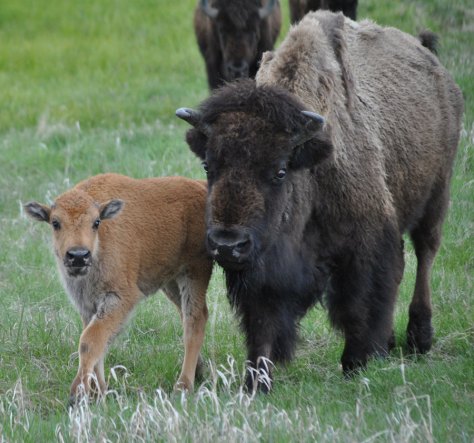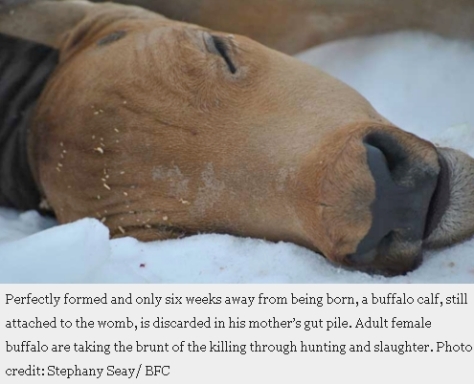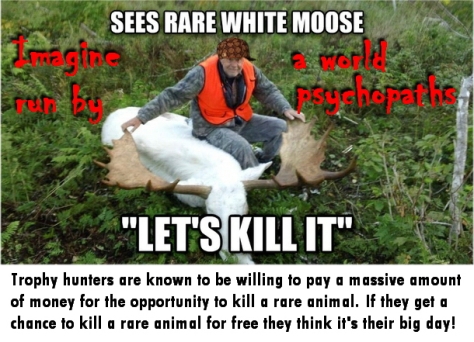Since 15th January 2015 (at the time of writing) approximately 250 bison have been captured inside the Yellowstone National Park and all – with the exception of 5 – were tragically transported to slaughterhouses.

Montana hunters and treaty hunters have killed at least 150 bison along the park’s borders, raising the death toll to 400 individuals.
The Montana livestock industry wants America’s last wild bison dead. In 1995, the Montana legislature adopted MCA 81-2-120 in response to political pressure by cattle ranchers to stop wild bison from migrating from Yellowstone National Park into Montana. MCA 81-2-120 gives the Montana Department of Livestock complete jurisdiction over migratory bison, which means that bison can be physically removed, hazed, rounded-up, killed by hunters, and sent to slaughter at the will and order of the Montana livestock industry. [IDA In Defence of Animals]
Please sign this petition:
Do not slaughter Yellowstone’s 900 Bison
https://www.change.org/p/animal-legal-defense-fund-u-s-national-park-services-do-not-slaughter-yellowstone-s-900-bison?
Stop Yellowstone National Park’s Bison Slaughter
https://secure2.convio.net/ida/site/Advocacy?cmd=display&page=UserAction&id=2709#.VNPqSjHOlyA.facebook











Bison slaughters in Yellowstone over for season after almost 600 killed, removed
Yellowstone announces end to 2014 bison slaughter following one-man blockade
Yellowstone seeks information on illegal bison shootings
Killed and injured by men in helicopters for NO good reason
This year’s tragic bison slaughter in Yellowstone National Park, driven by Montana’s ranchers, has come to an end. It resulted in nearly 600 bison being killed or otherwise “removed” from their rightful home in Yellowstone National Park. 318 were shipped to slaughter or research facilities and more than 270 wild bison have been killed by state and treaty hunters just outside Yellowstone’s boundary in Montana.
Lawsuits are underway to grant bison to habitat north (the Montana Supreme Court just ruled in favor!) and west, outside of the park. If you haven’t already, please send a letter to the Montana officials responsible for allowing or not intervening in this massacre:http://bit.ly/1p2Txkg
Yellowstone: Bison slaughters done for the season
The Salt Lake Tribunal by Matthew Brown
First Published Mar 08 2014 06:35 pm
The Associated Press
Billings, Montana: Yellowstone National Park ended shipments of wild bison to slaughter for the winter on Friday after almost 600 were removed in an effort to shrink the number of animals that cross into Montana during their annual winter migration.
Park officials said 258 bison were shipped out for slaughter by contract haulers and American Indian tribes that agreed to take the animals for their meat. Hunters killed at least 264 bison through Friday, and 60 more were captured and placed in a U.S. Department of Agriculture animal contraception experiment.
The removals were part of an ongoing effort to reduce Yellowstone’s herds to about 3,000 animals under an agreement with Montana officials.
Ranchers outside the park have a low tolerance for bison because of concerns the animals could spread disease and edge out cattle for grass. They’ve resisted efforts to allow bison to migrate into Montana and roam freely on adjacent public and private lands.
Wildlife advocates contend the capture and slaughter program is unnecessary, citing research that says Yellowstone could support far more bison than the 4,600 counted last summer.
Yellowstone’s chief scientist, Dave Hallac, said the slaughter shipments and bison hunt will offset the population growth from bison calves born in the spring. As more die naturally this winter there should be at least a modest overall population decline, he said.
Tribes’ participation in the slaughter marked a turnaround from prior years, when American Indians joined with opponents to protest the practice. The change drew sharp criticism from some wildlife advocates. On Friday, the activist group Buffalo Field Campaign issued a statement accusing the tribes of “providing cover to the shameful actions of the livestock industry and the government agencies.”
Jim Stone with the InterTribal Bison Council — which signed an agreement with the park in 2012 to take bison for slaughter — said the council is committed to the animals’ conservation. But Stone said the council’s leaders decided the only way to alter current practices was from the inside.
“You do it knowing it’s a horrible thing to do,” he said. “The only way you can change what’s going on is if you know what’s going on and can control what’s going on.”
By partnering with federal and state agencies that oversee bison management, Stone said the council is in a better position to push for the population goal to be revisited, for the creation of more bison habitat outside the park and to prevent the killing of young or pregnant animals.
Bison sent to slaughter this winter were captured and temporarily held in corrals along the park’s northern border with Montana, near the town of Gardiner. The park refused multiple requests from The Associated Press and others to visit the site.
A protester was arrested along the road leading to the corrals on Thursday after he chained himself to a cement-filled barrel in an attempt to halt the trucks taking bison to slaughter.


Hallac said 500 to 1,000 bison remain near the park boundary, and Friday’s announcement does not mean additional bison won’t be captured this winter.
In past years, bison captured late in the season — when pregnant females are close to delivery — have been held and released in the spring.
Christian Mackay with the Montana Department of Livestock said bison are allowed to remain in the 70,000 acre Gardiner Basin north of Yellowstone until May 1. But if the animals come into conflict with area residents they will be hazed back toward the park, Mackay said.
The Buffalo Field Campaign reported
Since 7 February, approximately 450 wild buffalo have been captured in Yellowstone National Park’s Stephens Creek bison trap, located in the Gardiner Basin. 318 were shipped to slaughter or research facilities and some were released.
Additionally, more than 270 wild bison have been killed by state and treaty hunters just outside Yellowstone’s boundary in Montana.
Daily Mail on how mass slaughter hunters nearly wiped out buffalo
Buffalo Field Campaign on Facebook
No wonder the ranchers were so keen to kill some bison:

What’s wrong with trophy hunting?
Someone please tell me what’s right about it, especially when children are involved.








